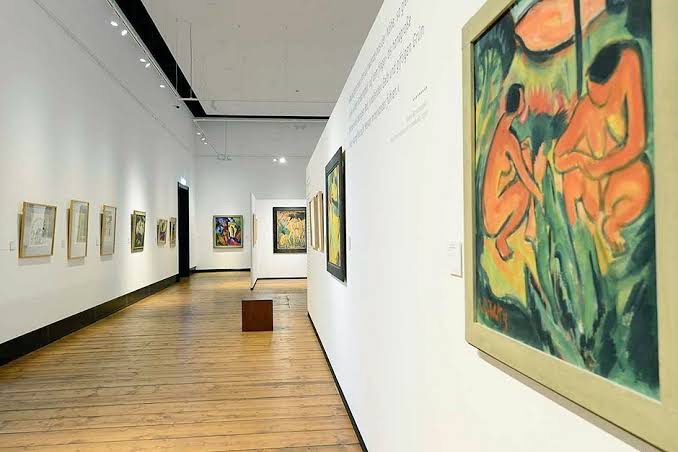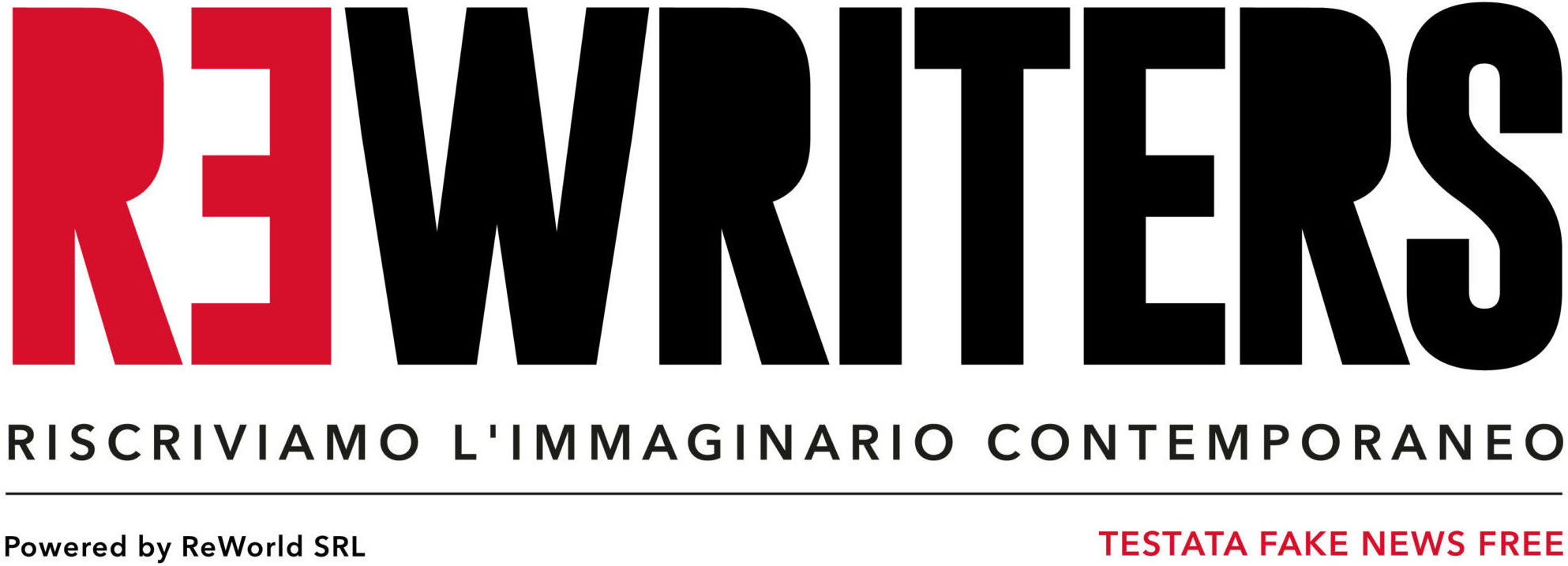Il Museo Brücke di Berlino: la mostra “Arte e Vita” fino al 28 agosto
Il 4 aprile il Museo Brücke inaugura la mostra Arte e Vita dedicata a quel gruppo di artisti dell'avanguardia tedesca formatosi a Dresda il 7 giugno 1905.

Il 4 aprile il Museo Brücke inaugura la mostra Arte e Vita dedicata a quel gruppo di artisti dell'avanguardia tedesca formatosi a Dresda il 7 giugno 1905.

(English translation below)
Il Museo Brücke, dopo una breve chiusura per preparare i nuovi allestimenti, riapre il 4 aprile con l’inaugurazione della mostra Brücke: Arte e Vita, aperta al pubblico fino al 28 agosto 2022.
Questo spazio, un palazzo storico aperto nel 1967 grazie alla collezione di Karl Schmidt-Rottluff, prosegue il suo lavoro di confronto con il passato dopo la mostra Whose Expressions? The Brücke Artists and Colonialism, composta da opere di culture extraeuropee create nel periodo di espansionismo coloniale tedesco.
La nuova mostra fa viaggiare il pubblico fino al 1910, uno degli anni più importanti per il gruppo di artisti denominati Brücke, per lo sviluppo del loro talento artistico e della loro creatività.
Questa esposizione racconta la storia di tre ragazzi, tre giovani architetti, Erich Heckel, Ernst Ludwig Kirchner e Karl Schmidt-Rottluff, che si incontrarono nella città di Dresda, con un desiderio comune per l’arte vista come piattaforma d’incontro tra realtà e immaginario.
Fu così che fu creato il nucleo del gruppo che più di un secolo dopo continua, grazie all’istituzione del Museo Brücke, a organizzare eventi culturali e comunicare l’importanza della cultura in quanto moderatrice di un discorso culturale e politico.
La creazione dell’opera d’arte, come discusso in questa mostra, non è solamente un percorso individuale, ma un riconoscere le influenze esterne che modellano la nostra percezione della realtà, delle forme e dei colori dell’immaginario. Nell’autunno del 1910, il critico d’arte Paul Fetcher nota che “si può notare una ricerca del contemporaneo, del presente, per plasmare quest’ultimo in una forma che non è legata alla tradizione […]”. Questi artisti volevano criticare la struttura sociale e artistica del nuovo secolo, non riuscendo a ritrovarsi nelle convenzioni sociali della loro epoca.
Opera dopo opera, questa esposizione ritraccia il tragitto personale e professionale degli artisti Brücke. Nel 1910, gli artisti centrali del Brücke, come Kirchner, Heckel e Pechstein, solidificarono un rapporto personale e professionale, trascorrendo insieme giornate immerse nella natura, ai Laghi di Moritzburg, poi trasportati verso Dresden, Berlino, Amburgo e il Mare del Nord.
In questo periodo di scambio, il prodotto di ogni artista fu influenzato dallo sguardo dell’altro, dell’amico, ricreandosi uno insieme all’altro. Strutturata in tre parti, la mostra ripercorre la storia culturale degli artisti a livello individuale e collettivo, in quanto parte di un gruppo, Brücke.
Tornando alle domande etiche sul passato del museo, in questo contesto chiediamoci: in che modo il periodo di creazione di questi artisti è riflesso nella loro opera? Oggi, come va ricontestualizzato e riconsiderato questo contesto storico?
L’arte e ciò che rappresentanole istituzioni culturali hanno un ruolo importante nel riscrivere la storia di oggigiorno con uno sguardo critico agli errori del passato.
Arte e Vita offre l’opportunità di tornare ancora più indietro, per capire la costruzione del gruppo Brücke, e ancora una volta, contestualizzare il loro lavoro.
Adesso, l’obiettivo è quello di confrontarsi con domande difficili ma importanti, più che d’introdurre il pubblico a una mostra soddisfacente dal punto di vista estetico e immaginario.
Una pubblicazione bilingue in tedesco e inglese con un testo della scrittrice Mariam Kühsel-Hussaini sarà pubblicato in occasione della mostra.
In giorni di guerra in Europa, nei quali la concezione del nostro rapporto con il passato e il bisogno imminente di riscrivere il presente e il futuro con più speranza si fanno sentire, l’arte e la cultura sono centrali al dialogo.
Per capire i conflitti di oggi giorno, rivolgiamo uno sguardo al passato per capirne le origini, la mentalità, gli errori e come questi fanno parte dell’ordine contemporaneo.
ENGLISH VERSION
The Brücke Museum, after a short closure, to prepare the new set-ups for the opening of the Brücke: Art and Life exhibition, is open to the public from the 4th of April to the 28th of August 2022.
The Brücke Museum in Berlin, a historic building opened in 1967 thanks to the collection by Karl Schmidt-Rottluff, which continues the work of confronting its past after the exhibition Whose Expressions? The Brücke Artists and Colonialism, composed of works of non-European cultures, was created in the period of German colonial expansionism.
The exhibition takes the public on a time travel all the way to 1910, one of the most important years for the group of artists named Brücke, for the development of their artistic talent and creativity. This exhibition tells the story of three young architects who met in the city of Dresden, Erich Heckel, Ernst Ludwig Kirchner and Karl Schmidt-Rottluff, with a common desire for art and their vision of the latter as a platform where reality and the imaginary can meet.
These ideals shaped the nucleus of the group which, more than a century later, continues, thanks to the establishment of the Brücke Museum, to organize cultural events and communicate the importance of culture as a moderator of cultural and political discourse.
The creation of the work of art, as discussed in this exhibition, is not just an individual journey, but a recognition of the external influences that shape our perception of reality, shapes, and colours of the imagination. In the autumn of 1910, the art critic Paul Fetcher notes that “We can see a search for the contemporary, the present, to mould it into a form that is not bound by tradition […].” These artists wanted to criticize the social and artistic structure of the new century, failing to find themselves in the social conventions of their time.
One piece of work after another, this exhibition retraces the personal and professional journey of the Brücke artists. In 1910, the central artists of the Brücke, such as Kirchner, Heckel, and Pechstein, solidified a personal and professional relationship, spending days together immersed in nature, at the Moritzburg Lakes, then moving to Dresden, Berlin, Hamburg, and the North Sea.
In this period of exchange, the product of each artist was influenced by the gaze of one another, recreating their persona and art together. Divided into three parts, the exhibition retraces the cultural history of artists at the individual, and at the collective level – as part of the Brücke group.
Returning to the ethical questions about the museum’s past, in this context let us ask ourselves: how is the period of creation of these artists reflected in their work? Today, how should this historical context be recontextualized and reconsidered?
Art and what cultural institutions represent play an important role in rewriting today’s history with a critical look at the errors of the past. Arte e Vita offers the opportunity to go back even further, to understand the construction of the Brücke group, and once again, contextualize their work.
Now, the goal is to deal with difficult but important questions, rather than to introduce the public to an exhibition that is satisfactory from an aesthetic and imaginary point of view. A bilingual German and English newspaper with a text by the writer Mariam Kühsel-Hussaini will be published for the exhibition.
In days of war in Europe, in which the conception of our relationship with the past and the imminent need to rewrite the present and the future with more hope is felt, art and culture are central to such a dialogue. To understand today’s conflicts, we shall look back to understand their origins, mentalities, and mistakes, and how these have metamorphosized in our contemporary order.
